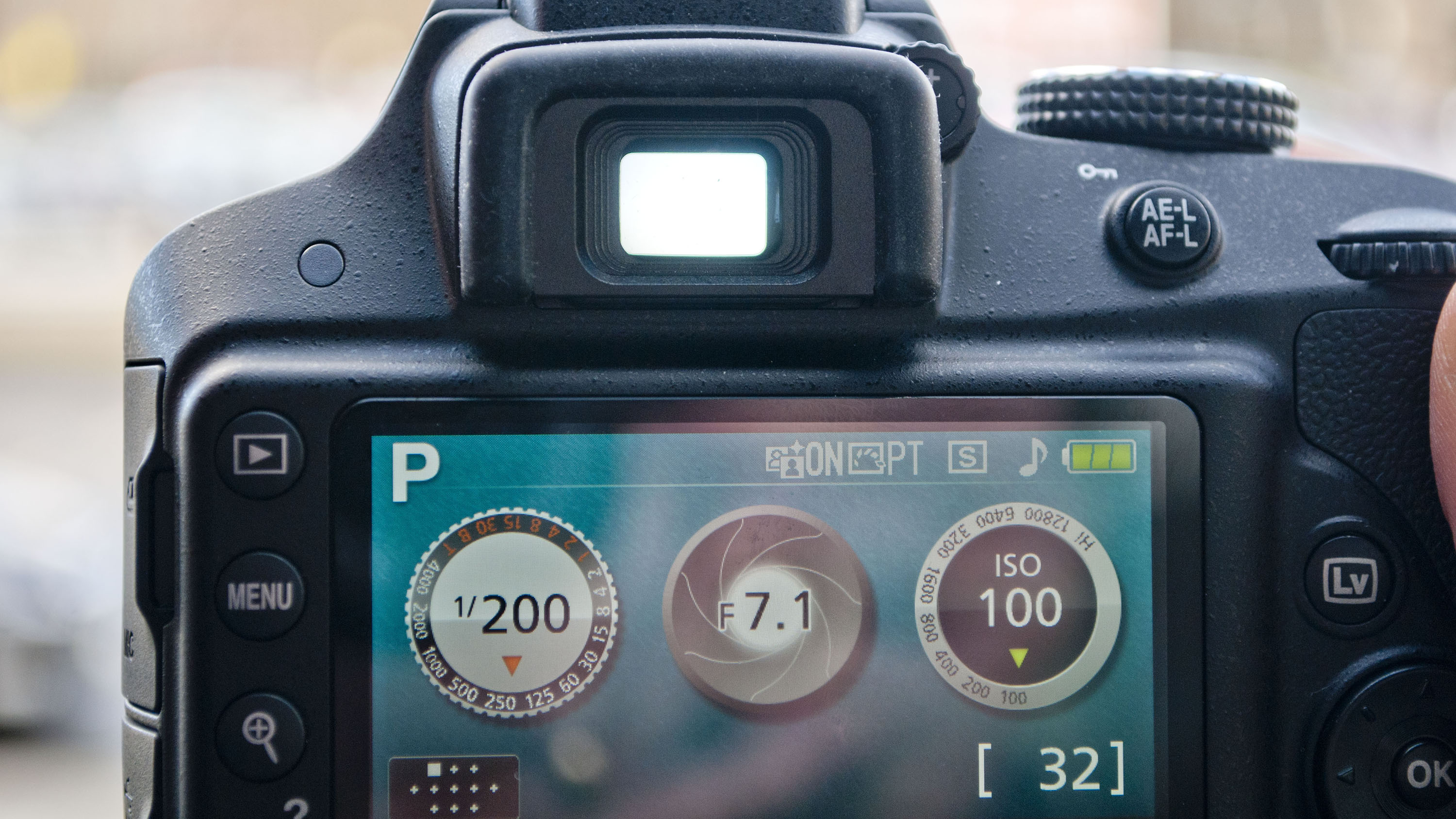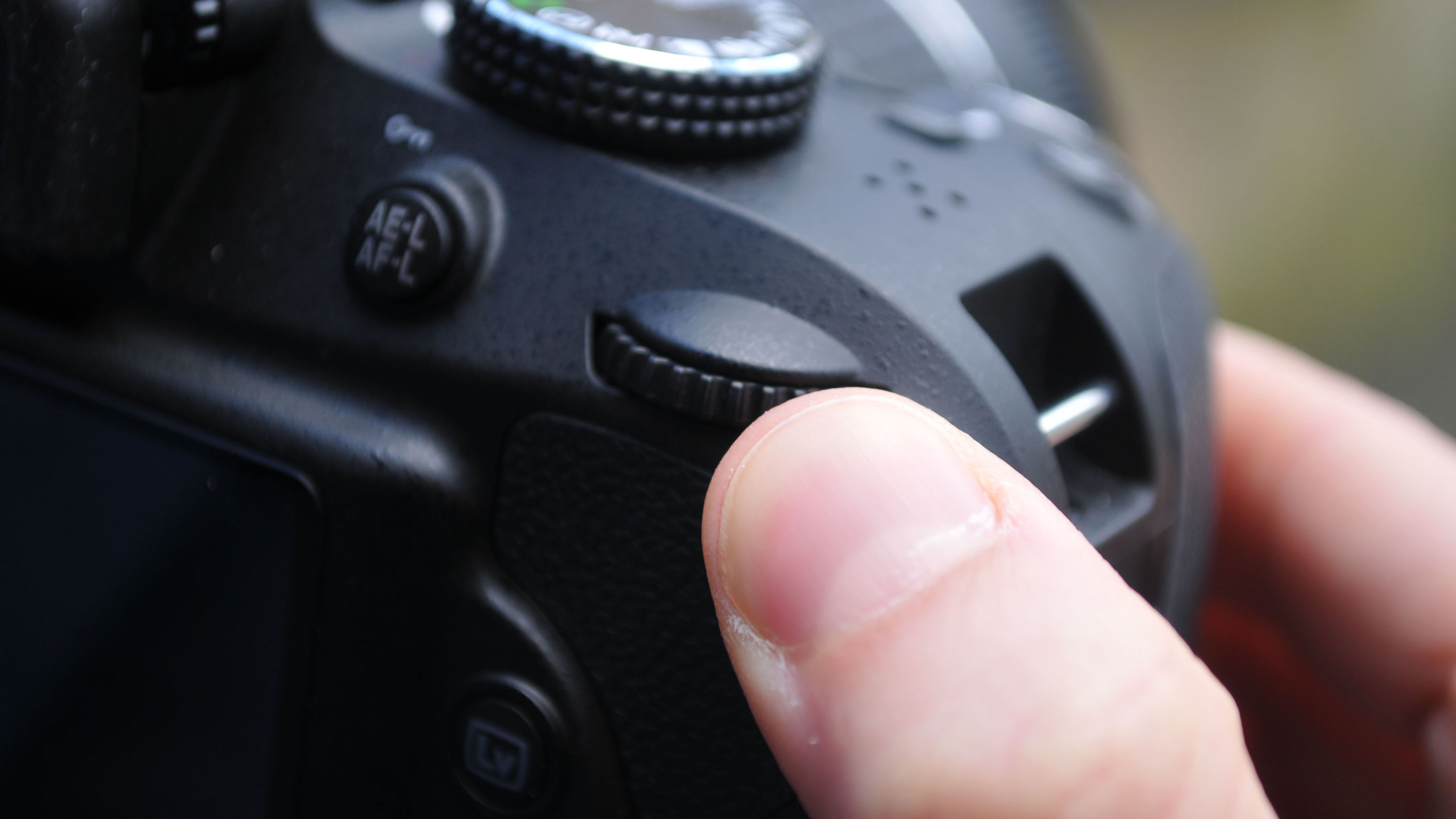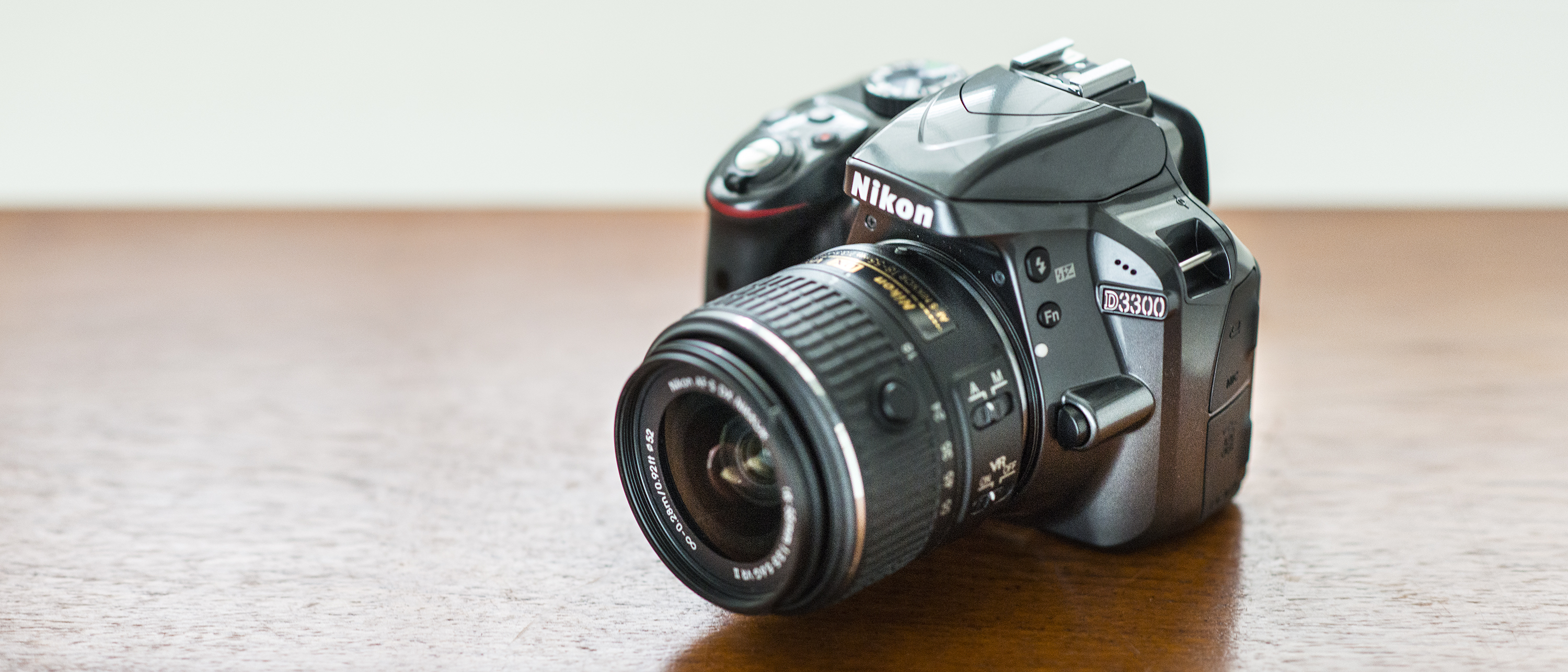Why you can trust TechRadar
Build and handling
- Polycarbonate construction
- Small and lightweight body
- Weighs 460g (including battery and memory card)
The D3300 is the second DSLR from Nikon to use a monocoque construction, which means that the chassis is made from a single piece of material. Lighter than the D3200 it replaced, the D3300 is actually a bit heavier than the D3400, with Nikon managing to shave a very modest 15g off the 410g body-only weight of the D3300.
The grip is still deep and comfortable to hold, with the textured surface making it feel particularly secure in the hand.
The 18-55mm kit lens that the D3300 will probably most likely be purchased with is collapsible. While by no means small in comparison to compact system camera lenses of the same equivalent zoom range, when collapsed the lens is quite a bit shorter than its predecessor, making it easier to fit into a small bag when not in use.
When you want to use the camera (with this kit lens attached), you'll first need to press a button on the lens barrel to expand it back into normal proportions. This does mean that start-up time from packed away is a little slower than other cameras, but you can of course leave it extended if you need a quicker start.




There isn't a huge number of buttons on the D3300, which is to be expected of an entry-level camera. On the top plate you'll find a mode dial for switching between exposure modes, such as fully automatic, aperture priority and the newly incorporated Effects mode. Also on the top plate you'll find the exposure compensation button (for use in automatic and semi-automatic modes) and an info button, which helpfully turns off the rear display, preventing it from being a distraction while using the viewfinder.
A sort of quick menu is accessed on the D3300 by pressing a button labelled 'i' on the back of the camera
A sort of quick menu is accessed on the D3300 by pressing a button labelled 'i' on the back of the camera. After you've pressed this, use the directional keys to pick a setting you want to change – such as white balance – and then press OK to bring up the different options available to you. Unfortunately, this menu isn't customisable, so if there's something on this menu you rarely use, you're stuck with it.
There is also a function button near the lens mount. By default holding this down will allow you to quickly change the ISO, but you can change this to control JPEG quality, white balance or Active D-Lighting. ISO seems like a sensible choice since it's something you'll probably need to change the most often out of the options available.
Sign up for breaking news, reviews, opinion, top tech deals, and more.
Autofocus
- 11-point AF, 1 cross-type AF point
- AF-assist illuminator
- 3D-tracking AF system
Meanwhile, there's an 11-point AF system that we've seen on a host of previous models, which has a central cross-type AF point for extra sensitivity.
It's a little unremarkable, especially when compared to some mirrorless rivals, but its a tried and test system that does a solid job.
Autofocusing speeds are pretty high, especially in daylight or well-lit conditions. It's rare for the kit lens to hunt around to acquire focus, and rarer still for it to present a false confirmation of focus. Speeds do drop a little in lower light conditions, but it's only when it gets very dark that the lens struggles to focus at all.
It performs very well, allowing you to track a subject across the D3300's 11 AF points
The D3300 also sports Nikon 3D-Tracking technology and while it's not as advanced as that found on more sophisticated models, it performs very well, allowing you to track a subject across the D3300's 11 AF points.
Changing the AF point is very simple. All you'll need to do is press the directional arrow keys to move around to the point you need. As the central AF point is cross-type, it is more sensitive than the others, so you may find it beneficial to focus and recompose in certain situations, or, if you're just aiming for speed.
It's worth bearing in mind, though, that focusing speeds drop significantly when using Live View, so it's only really recommended you use that if you're shooting something stationery, or you're shooting from an awkward angle and can't compose using the viewfinder. This is where mirrorless rivals definitely have the edge, so if you want to frame up your images on the rear LCD and shoot as fluidly as you can on a smartphone, you might want to look at an alternative.
Current page: Build, handling and AF
Prev Page Introduction and key features Next Page Performance and image quality
Phil Hall is an experienced writer and editor having worked on some of the largest photography magazines in the UK, and now edit the photography channel of TechRadar, the UK's biggest tech website and one of the largest in the world. He has also worked on numerous commercial projects, including working with manufacturers like Nikon and Fujifilm on bespoke printed and online camera guides, as well as writing technique blogs and copy for the John Lewis Technology guide.
